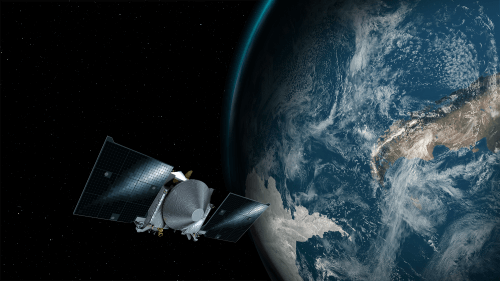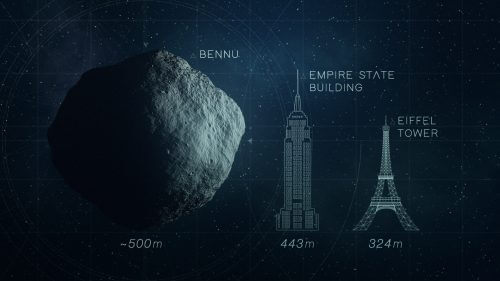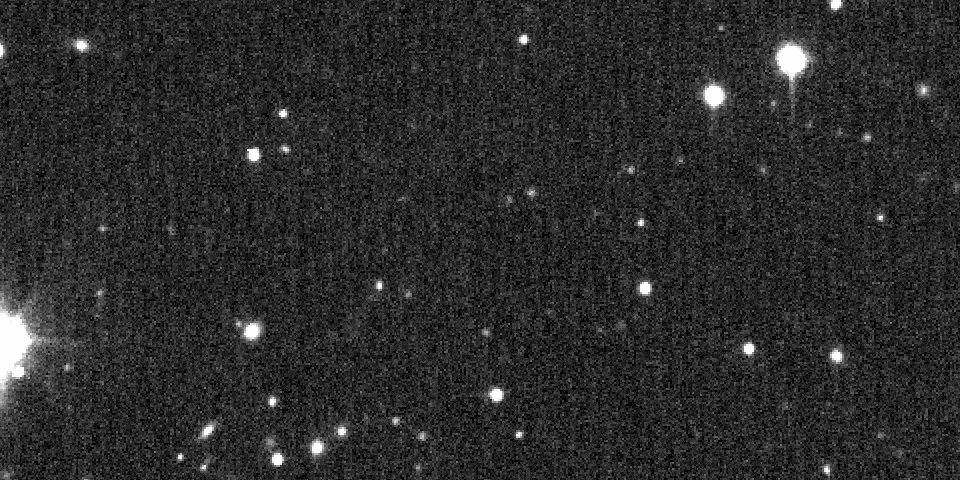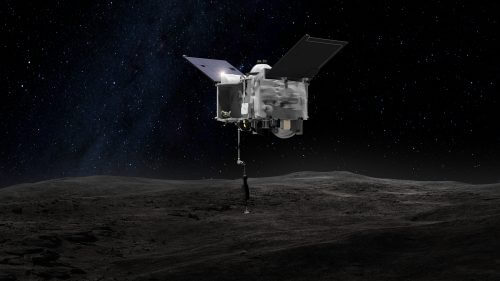The Osiris-Rex spacecraft, which was launched about a year ago with the aim of studying a small near-Earth asteroid and returning a sample from it to Earth, yesterday (Friday) performed a successful flyby near the planet, in order to take advantage of its gravity and adjust its trajectory to that of the asteroid.

The OSIRIS-Rex spacecraft, which was launched a little over a year ago, on September 8, 2016, returned yesterday to the planet from which it left andperformed a successful flight near it, in order to slightly accelerate its speed and adjust its trajectory to that of its research target, a near-Earth asteroid named they built. Beno, whose diameter is about 500 meters, is classified as an asteroid close-country Type Apollo, this is because it orbited the Sun outside the central asteroid belt, in an orbit close to that of the Earth and crossing it.
During the closest point to Earth in flight, Osiris-Rex reached a distance of 17,237 km above the Antarctic continent, at 19:52 (Israel time). The speed of the spacecraft in flight reached about 30,500 km/h.
The method, the machine Gravitational plexus, is frequently used by research spacecraft for bodies in the solar system, and uses the gravitational force of some planet in order to speed up, slow down or change the inclination of the spacecraft's trajectory, thus diverting it to the required path to reach the destination. The method saves the use of rocket fuels and a lot of fuel, and as a result, the weight saved can be used for scientific instruments, use a smaller and cheaper launcher, or shorten the duration of the journey to the destination.
"The gravitational plexus is a clever method to divert the spacecraft into the orbital plane of our son using Earth's gravity, instead of using fuel," said Dante Laorta, the mission's principal investigator from the University of Arizona.

Four hours after liftoff, the spacecraft began observing the Earth and Moon, in order to test and calibrate its various scientific instruments, before their operational use upon arrival at the asteroid at the end of 2018. In the coming weeks, the mission researchers will examine the new trajectory to which the spacecraft was diverted in flight, and determine if minor repairs are required to orbit, which will be carried out using the spacecraft's rocket engine.
During the flyby, amateur astronomers and professional space observers turned their telescope lenses to photograph the spacecraft approaching Earth. Their only next chance to do this again will be when the spacecraft returns to Earth in 2023, to return the sample it will collect from asteroid Beno.
"The opportunity to take pictures of the Osiris-Rex spacecraft as it approaches Earth provides a unique challenge for observers to hone their skills during this historic flyby," said Laorta, who also mentioned that while the spacecraft will be photographed by observers from Earth, it will make an observation in the opposite direction towards Earth .

Upon arrival at the asteroid at the end of 2018, the spacecraft will enter orbit around the asteroid and explore and map it remotely in order to select the site from which the sample will be taken. In mid-2020, the spacecraft will collect the sample when it approaches a distance of only about 5 meters from the asteroid, then it will extend a robotic arm that will "kiss" its surface for a few seconds to collect the sample, whose weight is expected to be between 60 grams and 2 kg.
After collecting the sample and burying it in a capsule with a heat shield and a parachute, the spacecraft will leave the asteroid when a suitable window opens for it in 2021 (when the asteroid will approach Earth), and return the sample to Earth two years later, in 2023. The capsule will then detach from the spacecraft and land in the Utah desert in the United States. The spacecraft itself will perform a rocket burn that will put it into orbit around the sun, and NASA has not indicated whether it intends (or is able) to use the spacecraft for another mission after that.
The asteroid Beno, named after him The phoenix from Egyptian mythology, is a relatively small block of stone and dust, with an average diameter of about 500 meters. Its proximity to Earth and its carbon-rich composition, which may also contain organic molecules that are the building blocks of life, made it an excellent target for the mission. After the sample is returned to Earth, it will be submitted to detailed laboratory tests that will examine the composition and method of formation of the asteroid, information that will add to the researchers' understanding of the formation and development of the solar system.

Another and interesting goal of the spacecraft is to examine the possibility that the asteroid in particular, and asteroids in general, will collide with the Earth. His son's orbit brings him close to Earth every six years. The probability that it will hit the Earth in the period between the years 2175 - 2196 is estimated at about 0.037%. While this is a slim chance, it could change due to unexpected changes in the asteroid's orbit in the future. To test this, Osiris-Rex will investigate the Yarkovsky effect On the asteroid, where the heat radiation that the asteroid emits when it is heated by the sun may affect, in the long term, its orbit.
Osiris-Rex is NASA's first mission to return a sample from the surface of an asteroid, but not the first of its kind. Japan has already carried out such a mission, when it sent the spacecraft the boss Towards the tiny peanut-shaped asteroid Itokawa. The mission was partially successful, after a malfunction occurred in the sample collection mechanism, but the researchers were able to locate a tiny number of dust particles that were captured by the spacecraft when its capsule returned to Earth. In 2014, the Japanese Space Agency launched a follow-up mission, Yabusa 2, which will carry out a mission similar to that of its predecessor and Osiris-Rex, if not more ambitious. Yabosa 2 will not only collect a sample from the asteroid it was sent to (Ryugu), But also Perform a controlled explosion Near it, in order to fire a high-speed projectile into its territory and create a crater on it, from which the spacecraft could collect a sample of underground rocks. In addition, she try out to land on the asteroid three tiny landers that could skip over it, andA large fourth lander More developed by the space agencies of Germany and France. Like Osiris-Rex, Yabosa 2 is also expected to reach its destination in 2018, but its return to Earth with the sample is planned to happen earlier, in late 2020.
For a message on the NASA website
See more on the subject on the science website:

3 תגובות
A. From the Ministry of Space Tourism:
It's enough to push from the side and change the course, you don't have to destroy it completely
Getting to an asteroid/comet has already been done by Rosetta and Pleia in the past.
Planting a bomb in the core of the asteroid is already a more complicated business...
An excellent platform for planting a nuclear bomb on any threatening asteroid.